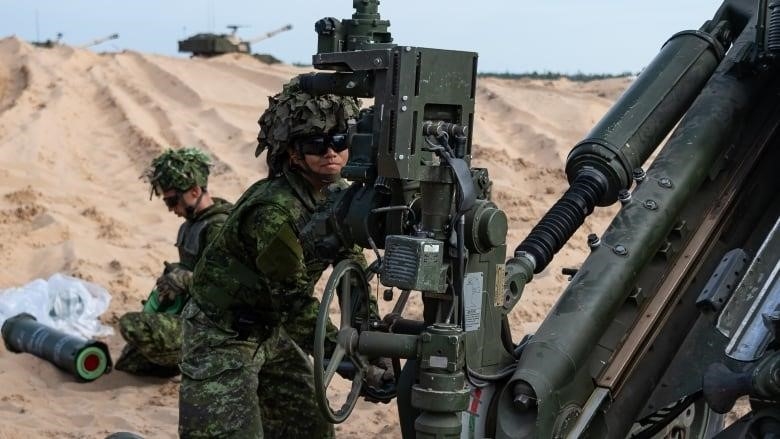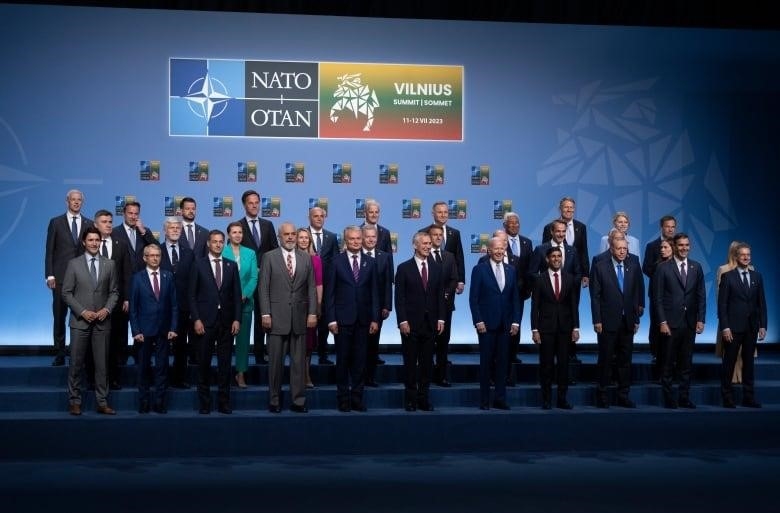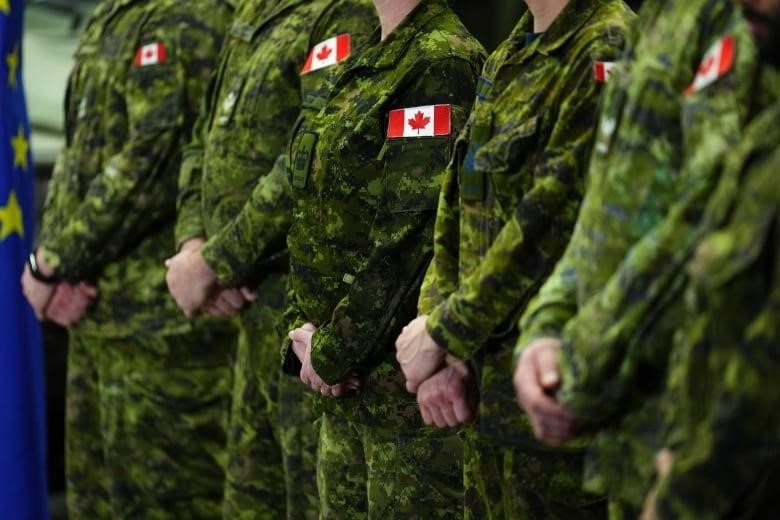
Canada has agreed to the benchmark, but it hasn’t said how it will meet it
Canada and other NATO countries have been criticized for years because they don’t spend 2% of their GDP on the military, which was a goal set by the military alliance in 2014.
In 2014, Canada and other allies agreed to work toward that goal, but they have never been able to reach it.
But at the beginning of this month, the leaders of NATO countries promised to spend more on national defense. They agreed to spend at least 2% of their GDP each year on defense, with a fifth of that going to big equipment and research and development.
Still, it’s unclear when such a target might be realized. Canada has agreed to the benchmark, but it hasn’t said how it will meet it..
The agreement also makes people wonder how Canada’s budget would be affected if it spent billions more each year on its military.And would that extra spending change the defense forces of the country in a big way?
Can Canada afford to spend more on the military
Canada would have to take on a lot more federal deficit and debt than is already planned in order to meet its NATO spending commitment.
In a recent Toronto Sun column, Jack Fuss, director of fiscal studies at the Fraser Institute, said that Canada couldn’t spend more on the military without “seriously weakening its fiscal position” unless it was “finally willing to prioritize such spending over other federal initiatives and programs that are currently favored.”
According to data from NATO, the Canadian military will have a budget of $36.7 billion in 2023, which is 1.29 percent of the country’s GDP.
Adding 0.77 percentage points to get to 2% this year would mean spending an additional $20 billion. Canada already has a $40 billion deficit, so this would add to it.
Kevin Page, a former parliamentary budget officer for Canada, told CBC News over the phone that if this is done without changing taxes, it will likely cause a problem for the federal government’s ability to pay its bills.”So you can’t just add this to the deficit.”
It will also bring up the question, “How are we going to pay for this?” as he put it.
“What would we do to make money?” What would we do with the money we have to spend? Would we try to make room for it by cutting some other programs?”

Pedro Antunes, a senior economist at the Conference Board of Canada, said that the extra money spent on the military would be in line with the Liberal government’s overall spending increase over the past few years.
But an extra $20 billion would be a big “chunk of change,” he said.
“We’ve spent so much already on everything,” he said. “Financially, things are pretty tight, and we wouldn’t have $20 billion to spend.
“I’m definitely worried about adding to the debt. Are we going to borrow more money to pay for this? I don’t think that’s a good idea.”
Even though it might not be exactly $20 billion more a year. In 2017, the government promised to invest in the Canadian Armed Forces for the long term.
Taking this into account, a report from the Parliamentary Budget Office in June 2022 said that Ottawa would need to spend an extra $15.5 billion in 2023–2024, $14.5 billion in 2024–2025, $14.1 billion in 2025–2026, and $13 billion in 2026–2027 in order to spend 2% of GDP on the military.
If Canada did increase its spending to 2%, would this change the military in a big way
Experts agree that it wouldn’t happen right away. Part of the reason for this is the way things are bought.
Prof. Stephen Saideman of Carleton University told The Canadian Press that the procurement processes have not been fixed. “They don’t have enough people. When you put these two things together, it’s just hard to spend money. Even if you give a lot of money, it’s hard to actually spend it.”
David Perry, president of the Canadian Global Affairs Institute, an Ottawa-based think tank that works on issues like defense, diplomacy, trade, resources, and development, agreed that capacity to implement is a big factor.
“Today, the government publishes bold new plans to spend money on almost anything, and with a few exceptions, it usually takes a couple of years to get any of them really going.So that’s what you’re really looking at when you think about what it would mean for the forces.
“Some people think that to reach that goal, we’d have to completely change our military,” he said. “I’m not completely sure.”
Perry said that many “big ticket pieces” of equipment, like submarines, maritime coastal defense vessels, and the current fleet of main battle tanks, do not have replacement programs that are being paid for.
Perry also talked about the physical infrastructure of DND, some of which is decades old.
“There are a lot of different funding pressures right now that, if the government could handle them, would take up a lot of money without doing much new.”
And any long-term infusion of cash would mean “gradual evolution of the military, not something transformative,” he said.
Craig Stone, an associate professor emeritus of defence studies at the Canadian Forces College in Toronto, said that such a big increase in spending would make people wonder what the money would be used for.
“Are we going to add 5,000 more people to the [Canadian Armed Forces]? How much money does that mean in the long run?”
Or would they put their money into buying more F-35s, more modern equipment, and submarines? he said.
He said that this kind of funding boost would make it possible for the military to make major capital investments and allow the Canadian military to replace most of its old equipment.
Stone said there are other problems, though.

For example, he said, the military could probably get F-35s in a reasonable amount of time since they’ve already started a process.But if Canada wanted to buy new submarines, the first question would be whether Canadian industry could build submarines or keep them running once they were built.
“And the answer to that is probably no,” said Stone.”So, who do you join forces with? And that’s not even talking about whether it’s nuclear-powered so it can actually be under the sea ice in the Arctic Ocean.”
“That’s at least 10 years before we can even consider getting a submarine. It’s a complicated piece of machinery, and not many countries know how to make it.
He also said that the defense industry faces the same problems as the rest of the manufacturing sector: there aren’t enough workers.
“You don’t have that surge capacity you’d like to have because you don’t have the workers to do it.”
